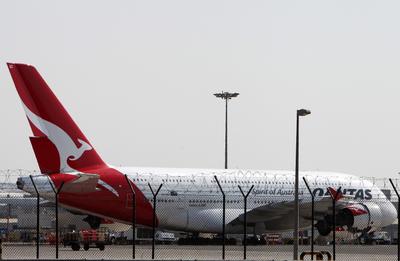In response, Qantas announced in August a new strategy with an even more explicitly Asian focus.
Qantas has for some time been using Asian cities as hubs, where it can consolidate traffic subsequently to be flown to Europe. The airline will continue to do this out of Singapore (using its new aircraft), but the company’s new strategy will see it using its partner British Airways flights from Hong Kong and Bangkok.
This strategy looks like a further retreat to Qantas’ home base, which would lead to a steadily shrinking business and fewer Australian jobs. But it also has a complementary strategy to deal with the challenges; Qantas has simultaneously decided to establish more operations in Asia.
Qantas already has Jetstar Asia, a low-cost profitable carrier operating inside and outside Australia, but it is now planning to set up Jetstar Japan in partnership with Japan Airlines and Mitsubishi, and Jetstar Japan will also fly to China and East Asia. Additionally Qantas proposes to create a new premium-quality — but also joint-venture — carrier somewhere in Asia to serve this region’s ‘emerging middle class’. Singapore is the most likely base, though Kuala Lumpur has also been mooted.
Interestingly, the new service will not carry the Qantas brand. This appears to be reserved for premium services in Australian markets or those connected to Australia, such as routes from Europe to Australian cities. Instead, the Jetstar brand seems to have a much wider application in the low cost market.
The partnership approach may not be Qantas’ first preference. Instead, the decision to go with this strategy reflects in part how trade regulation systems in international aviation impose constraints on operators, functioning as they do like single-item free trade agreements. Ownership is used to identify the carriers with market-access rights in those arrangements, and Qantas will have to work around this constraint when applying its new strategy.
Still, Qantas now looks set to export its organisational and managerial capabilities through these new ventures — not by extending its traditional operations from an Australian base. At the same time, the strategy will bring in other inputs — including staff — from cheaper offshore locations. Manufacturers have been doing this for years, and it is now common strategy for services firms to plan in supply-chain terms.
Some argue that without the relocation of activity offshore, there would be even fewer Australian Qantas jobs in the future. Despite the power of this argument, recent experience shows how hard it is to manage the adjustment. It also shows how change has very different effects on different types of staff.
The announcement of these new strategies for going into Asia has brought a powerful backlash from Qantas unions, and the outbreak of an increasingly labour dispute. The current dispute began with Qantas employees pushing for the company to pay colleagues in overseas Qantas-owned operations Australian wages. Qantas’ proposal to create new businesses offshore added to employee concerns about incomes and jobs. The labour union campaign included rolling strikes, which Qantas management argued were creating uncertainty and leading to a significant drop in forward reservations. Services firms, which cannot store their output, are highly exposed to staff threats about the withdrawal of services. Manufacturers, on the other hand, might be able to ‘stock up’ for a more drawn-out conflict. This dispute between the unions and Qantas culminated in the lockout of workers which grounded the airline until national legislation was brought to bear to end it and to force an arbitrated settlement on the grounds of the damage it was causing to the economy. According to Australian industrial relations arrangements, the parties have three weeks from 31 October to reach an agreement — the regulator having agreed with Qantas and the government that the industrial action should be terminated. If Qantas and the unions fail to agree, there will be compulsory arbitration.
As yet the, details of the final outcome of this particular dispute are not yet clear. What is clear is that Qantas is moving toward a change in its structure, aimed at garnering a return on its core capabilities — and with a focus on the growth markets in Asia.
Professor Christopher Findlay is Executive Dean of the Faculty of the Professions at the University of Adelaide

